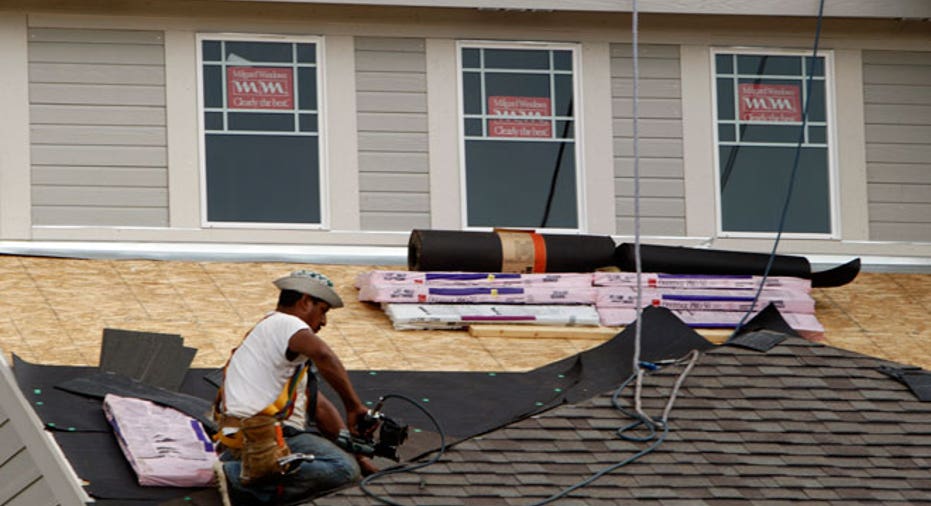Roof Insurance Coverage Hits a new Ceiling

If you live in one of the states hardest hit by wind and hail damage these past few years, you may have a gaping hole in your roof insurance coverage without even knowing it.
A string of unusually costly years for roof damage claims in Oklahoma, Kentucky, Tennessee and elsewhere has prompted some insurers to dial back the roof coverage portion of their home insurance policies, especially on older roofs.
One popular trend is to offer "actual cash value," or ACV, coverage on your roof instead of full "replacement cost value," or RCV. What's the difference? With ACV, your insurer pays to repair or replace your roof, less your deductible and depreciation for the age and type of roof. With RCV, however, the insurer pays all costs to make your roof whole again without factoring in depreciation, once you've met your deductible.
Winds of change
Allstate led the trend two years ago, though the company prefers to say that its House and Home policy offers a "scheduled roof depreciation option" for wind and hail damage on older roofs and is not the same as actual cash value coverage. Other insurers in hard-hit states, including Farm Bureau Insurance of Tennessee and American Family Insurance, also have moved away from traditional replacement cost value roof coverage.
Michael Barry, spokesman for the Insurance Information Institute, an industry trade group, calls it a logical response, from the insurer's perspective.
"If you look at a company like Allstate, they have all these homeowners who have gotten three $20,000 roof replacements in three years. That's not a sustainable business model when they're charging you $1,100 a year for home insurance," he says.
Unfortunately, the trend leaves homeowners who have never heard of ACV or RCV at a loss as to which coverage to choose (if given the choice) -- and could stick some who failed to spot a change on their policy renewal notice with a steep roof repair bill down the road.
Compare homeowners insurance rates to find the best deal.
A potentially big out-of-pocket hit
For example, say your $20,000 roof is 10 years old and your home insurance policy has a $1,000 deductible. If a storm destroys it and you have actual cash value roof coverage that depreciates the roof's value by $1,000 per year, your out-of-pocket share of the cost for a new roof would be $11,000 (comprised of the $1,000 deductible plus $10,000 for the depreciation). With replacement cost coverage, you'd be out only the $1,000 deductible.
"The dollar difference between replacement cost value and actual cash value is huge," Barry admits.
To avoid such surprises, Allstate gives House and Home policyholders a "roof payment schedule" upfront that states exactly what their roof will be worth based on age and roof type, should disaster strike.
"It's really a loss settlement schedule," says Allstate Vice President Laurie Pellouchoud. "It is only applied in the event of a wind and hail loss, so for other types of losses such as fire, your roof would be covered for full replacement cost."
Pellouchoud declined to estimate what policyholders might save on their premiums by choosing the loss settlement roof insurance option, saying only, "This is a way for customers to choose to purchase less coverage and pay less money." House and Home policies are available in 27 states so far, she adds.
A question of fairness
At the trade group the American Insurance Association, chief claims counsel Jim Whittle sees the actual cash value roof option as a good thing for consumers.
"A lot of folks like ACV because they realize a real serious savings in their premium, and as a result of that they are, in essence, self-insuring for a portion of the loss," he says.
Even so, Whittle says he recently switched insurers for his Maryland home after he found a policy with replacement cost roof coverage for less than he paid for his previous ACV policy.
Consumer advocates find little to celebrate in the move toward actual cash value roof insurance coverage. Amy Bach, executive director of United Policyholders, a San Francisco-based insurance consumer group, says lower- and middle-income Americans and owners of older homes are being penalized unfairly.
"You always hear insurers say after every storm, 'This wiped out our entire year of premiums.' Well, do they give people money back on the years that they don't file claims? No," Bach says. "At the end of the day, (ACV) makes people feel like they're getting cheated."
Even Allstate agents are balking at the trend. "In our opinion, the House and Home policy is a major step backward for consumers," Jim Fish, executive director of the National Association of Professional Allstate Agents, said in an email.
But Whittle says any perceived unfairness has a time-honored remedy for home insurance customers.
"Shop around," he says. "We have 3,000 property and casualty insurers in the United States, so there is a lot of variability in their products and how they market, and that's a good thing. That variability offers a lot of options in the marketplace."
Copyright 2014, Bankrate Inc.